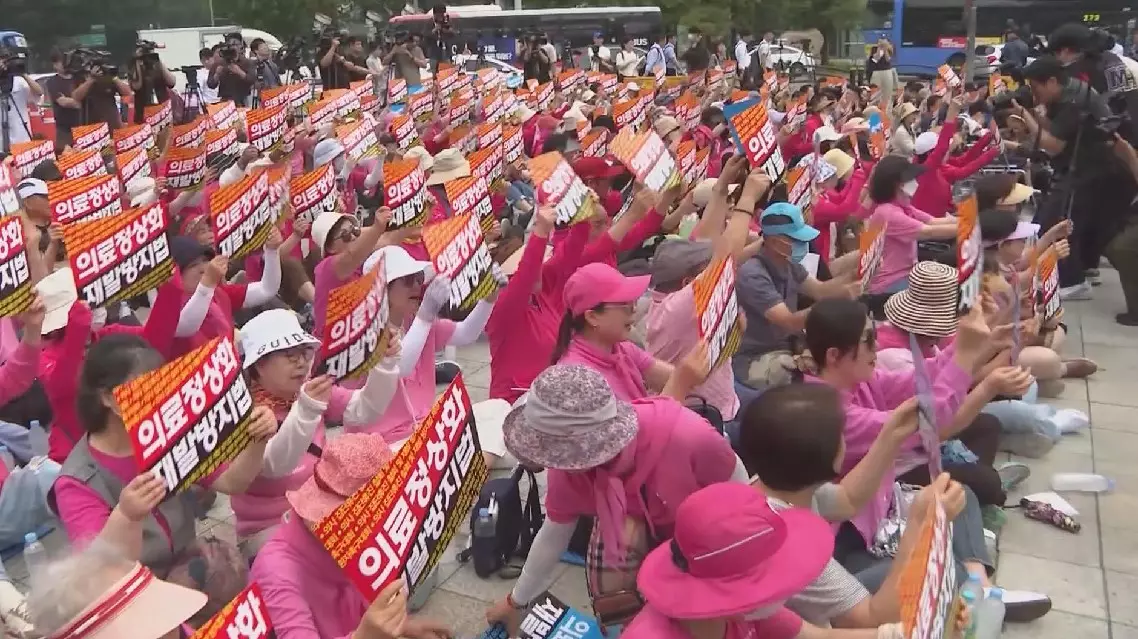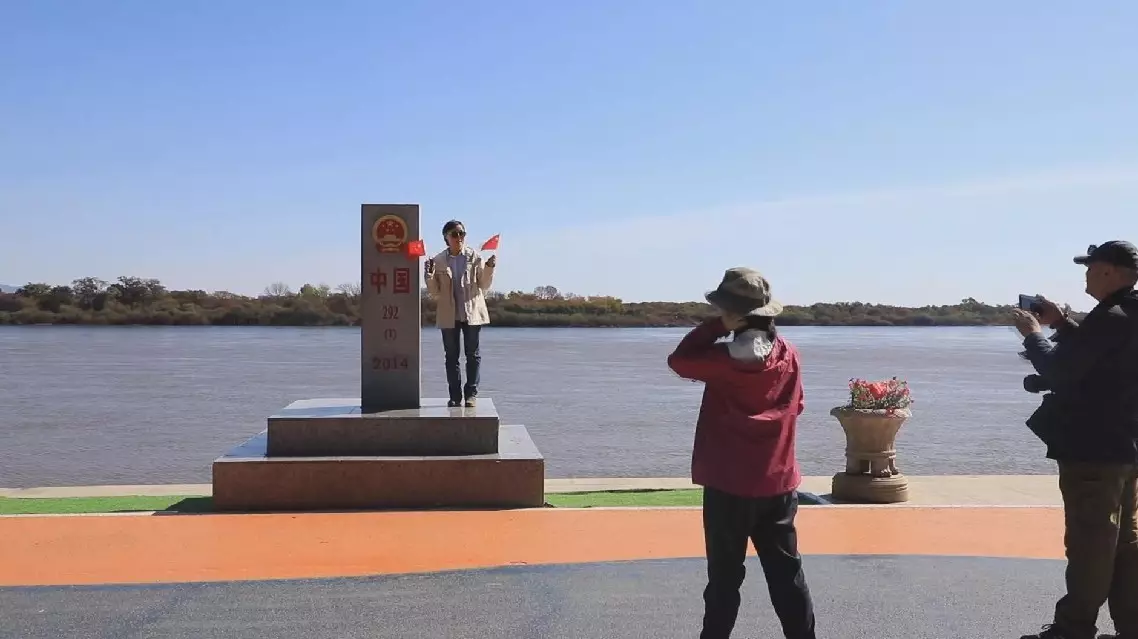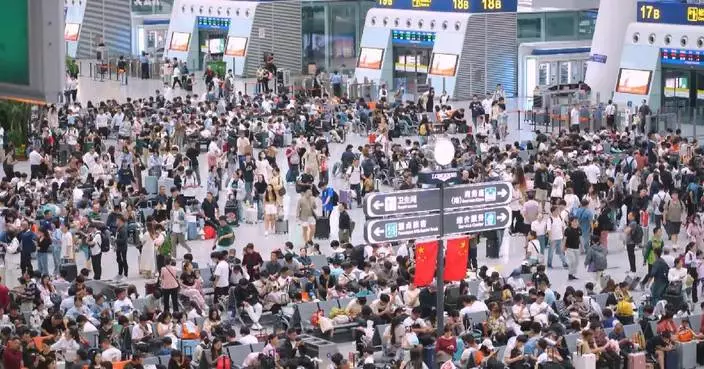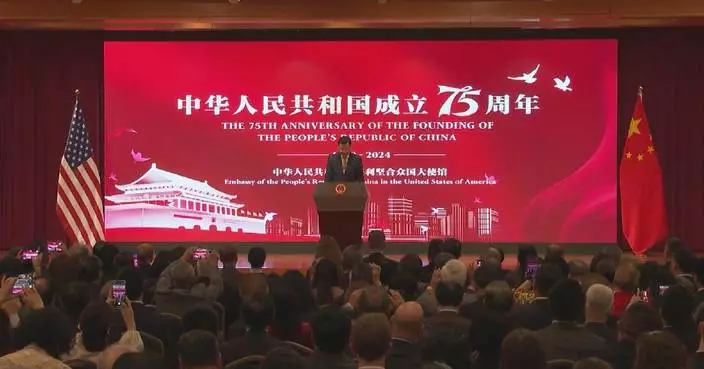Hundreds of patients in South Korea on Thursday staged a protest urging physicians to halt a prolonged strike that has affected public health services.
Starting from February, thousands of medical trainees ceased work in protest against government proposals to expand medical school admissions, arguing that this would compromise the quality of specialist education.
With no solution in sight, patients are now demanding the two sides quickly come to a compromise, saying lives are at stake.
Park Soon-ja is a breast cancer patient and survivor. But she isn't at a hospital receiving the treatment she needs. Rather, she has taken to the streets in a fight to sustain her health and prolong her life.
"I'm a cancer patient and I need to undergo regular tests. But everything keeps getting delayed because the doctors are not available. All I want is to receive the treatment I need at the scheduled time," said Park.
Park is one of hundreds of patients protesting the on-going stalemate between the government and the nation's medical workers. The protest by patients is unprecedented. Never before have such groups needed to stage an organized rally like this.
The patients demand doctors end their walkout immediately and return to work. They also want the government and lawmakers to ensure that this sort of breakdown of healthcare never occurs again.
"I stand with you today requesting parliament to revise medical laws to prevent any collective action that threatens people's lives and causes patients' anxiety," said Kwak Jeom-soon, a civic group leader and also a breast cancer patient.
With the doctors' strike entering into its fifth month, several hospitals have even threatened to take more stringent action – like suspending operations indefinitely in the coming days and weeks.
"It's not just my primary care doctor. There's radiology and many other departments. Those people have all walked away, and I'm not in a situation to go to the emergency room. Cancer patients can't go to the E.R.," said Park.

Patients in South Korea rally urging physicians to end prolonged strike
Visiting boundary markers seems to have become a new trend in holiday-making on frontier regions in Northeast China's Heilongjiang Province neighboring Russia so far in the week-long National Day holiday that started on October 1.
At the border gateways and boundary monuments on the 2,981-kilometer frontier in Heilongjiang, tourists from all over the country are seen stopping to have photos taken with the boundary monuments or markers, with some listening to stories told by frontier police officers about past events associated with the frontier regions.
In China, the National Day holiday is a peak travel and tourism season.
Lying in the easternmost point of China is the Wusu Town Dongji Square in Fuyuan City of Heilongjiang Province. Next to the huge sculpture bearing the Chinese character of "East" in the square, the five-star Chinese national flag is fluttering in the wind. Just beside the national flag is a boundary monument, which has become an attraction to visitors.
Many of the visitors say that having a picture taken with the boundary monument on the occasion of the National Day holiday would make them feel honored about happy powerful their motherland is.
Li Xin, a police officer with the Wusu Town Border Police Station on duty at the Dongji Square, said he has felt the enthusiasm of visitors.
Li said that the number of tourists visiting the Doingji Square so far in the National Day holiday has doubled compared to the same period of last year.
In Mohe, the northernmost city in China which is more than 2,000 kilometers away from Dongji, visitors are also seen flocking to the Beiji (North Pole) Village to have pictures taken with the local boundary marker.
Zhang Jiale, a police officer with the Arctic Border Police Station in Mohe, expressed the same feeling as Li Xin.
In Suifenhe, another frontier city in Heilongjiang, tourists also seen enthusiastically flocking to the boundary monument beside the third-generation border gateway to have pictures taken with it. The Suifenhe Gateway Scenic Spot is located at the zero point of Suifenhe Highway Port G10 Suiman Expressway, the largest land port to Russia in Heilongjiang Province. It is the only longitudinal cross-border scenic spot in China and the only one that integrates three generations of border gateways in China's gateway scenic spots.
In this scenic spot, tourists frequently ask Wang Jiaxing, a police officer with the Suifenhe Entry-Exit Border Checkpoint on duty, to help take photos or ask about how to make a tourist travel to the neighboring country.
Ke Zunlei, a tourist from Shanghai, visited the site with his wife and young daughter.
"Standing at a frontier region of my own country, I feel that this place is quite sacred," Ke said.
In Hutou Township of Jixi City in the province, the boundary marker "292-1-2014," which marks the starting point of the Wusuli River between China and Russia, also attracts many visitors to make a visit and take photos.

Visiting boundary markers becomes new trend in China's National Day holiday travel










